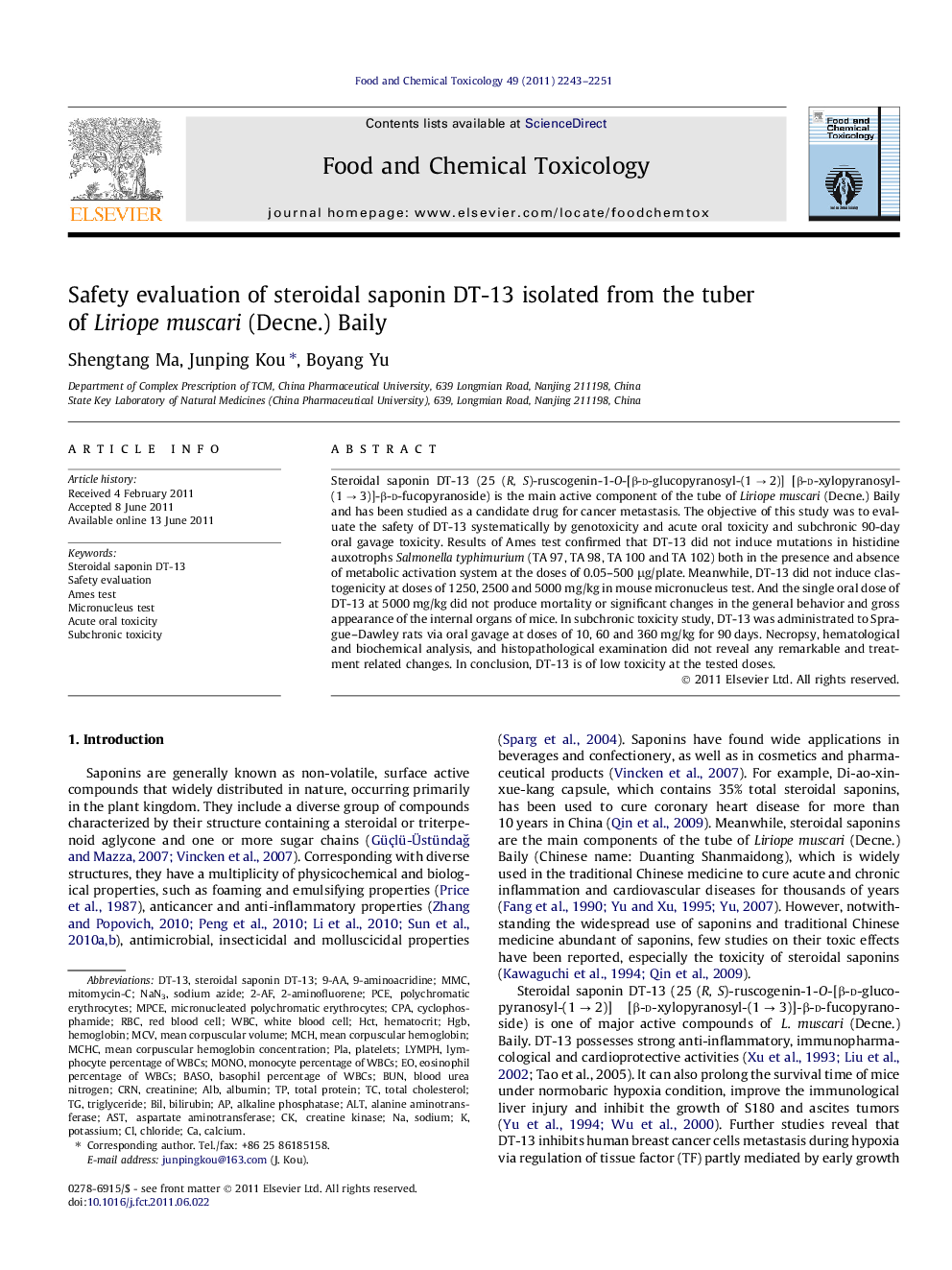| Article ID | Journal | Published Year | Pages | File Type |
|---|---|---|---|---|
| 5853118 | Food and Chemical Toxicology | 2011 | 9 Pages |
Steroidal saponin DT-13 (25 (R, S)-ruscogenin-1-O-[β-d-glucopyranosyl - (1 â 2)] [β-d-xylopyranosyl-(1 â 3)]-β-d-fucopyranoside) is the main active component of the tube of Liriope muscari (Decne.) Baily and has been studied as a candidate drug for cancer metastasis. The objective of this study was to evaluate the safety of DT-13 systematically by genotoxicity and acute oral toxicity and subchronic 90-day oral gavage toxicity. Results of Ames test confirmed that DT-13 did not induce mutations in histidine auxotrophs Salmonella typhimurium (TA 97, TA 98, TA 100 and TA 102) both in the presence and absence of metabolic activation system at the doses of 0.05-500 μg/plate. Meanwhile, DT-13 did not induce clastogenicity at doses of 1250, 2500 and 5000 mg/kg in mouse micronucleus test. And the single oral dose of DT-13 at 5000 mg/kg did not produce mortality or significant changes in the general behavior and gross appearance of the internal organs of mice. In subchronic toxicity study, DT-13 was administrated to Sprague-Dawley rats via oral gavage at doses of 10, 60 and 360 mg/kg for 90 days. Necropsy, hematological and biochemical analysis, and histopathological examination did not reveal any remarkable and treatment related changes. In conclusion, DT-13 is of low toxicity at the tested doses.
⺠Steroidal saponin DT-13 shows no genotoxicity in Ames test and mouse micronucleus test. ⺠DT-13 shows low oral acute toxicity with the minimum lethal dose (MLD) more than 5000 mg/kg in mice. ⺠DT-13 shows low oral subchronic toxicity at the doses of 10, 60 and 360 mg/kg in rats. ⺠DT-13 shows lighter sensitivity to female mice.
